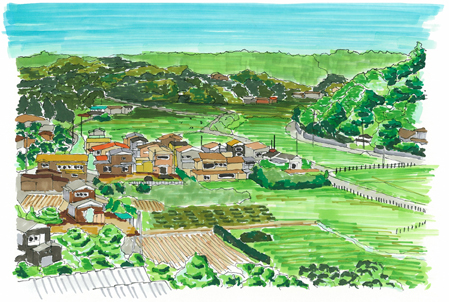The text is from here.
The journey to development
Last updated on July 4, 2024.
1.Background of the development of Kohoku New Town (Showa 40s)
1-1. "High Economic Growth" in the 1940s and Population Growth in Yokohama City
Since the 1930s, petrochemical factories and steel factories have been built one after another in the coastal industrial area, attracting many people from rural areas to the suburbs of Tokyo, a large city.
Located in a distance from Tokyo by train, Yokohama City has built many homes as a place for fathers working in Tokyo to live. As a result, the city's population surged from about 1.14 million in 1955 to about 1.79 million in 1965.
1-2. Shadow of disorderly urbanization in rural areas
The Kohoku New Town area, located in the northwestern part of Yokohama City, used to be a rural area with gentle hill fields, bamboo forests, forests, and paddy fields in Tando.
However, in the 1940s, the surrounding area was converted into residential areas along with "high economic growth."
The hills were cut down, and houses were built more and more on the land created by the fields. The cityscape created in this way was somewhat similar, and the road was dead end or suddenly narrowed.
The development of such residential areas has spread more and more like green worms that eat cabbage. The movement of this residential area is called the "sprawl phenomenon" in the sense of "chaotic urbanization phenomenon".

Inquiries to this page
Tsuzuki Ward Ward Administration Promotion Division Planning and Adjustment Section
Phone: 045-948-2225,045-948-2226
Phone: 045-948-2225,045-948-2226
Fax: 045-948-2399
E-Mail address [email protected]
Page ID: 819-369-909












